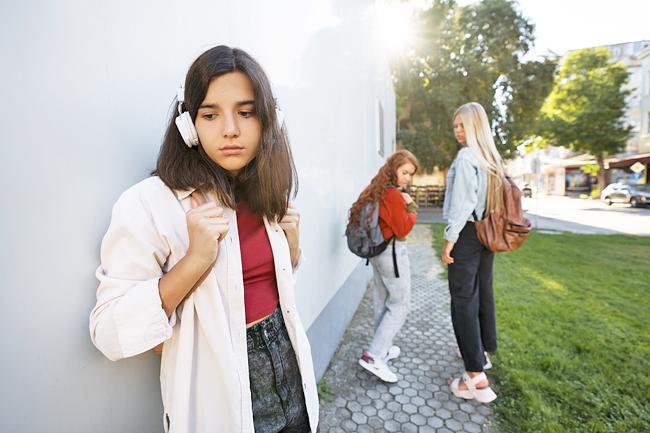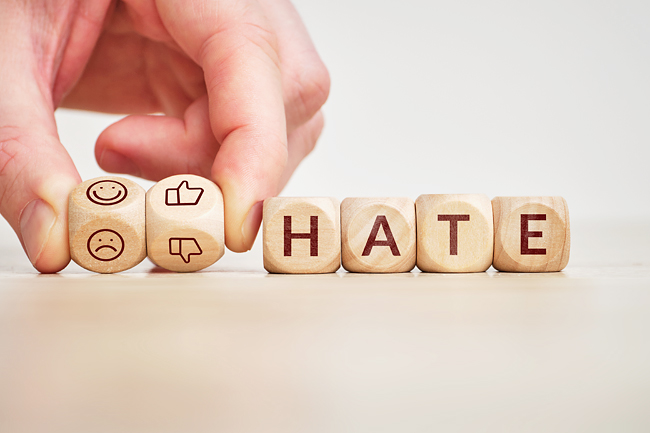Phyllis Fagell
THE WASHINGTON POST – “The first time I got called the ‘n-word’ I was standing outside my sixth-grade classroom exchanging a book from the lockers,” said Kimu Elolia.
He wasn’t prepared for the weight of the word or how it would leave him feeling paralysed and isolated for weeks, but said he “didn’t have language to explain what I was experiencing”.
Elolia, 29, is the creative producer for Sonic Union and now creates podcasts for children designed to foster empathy for the Black experience, which he said will incentivise them to stand up for one another.
Helping our children understand how and why to stand up for one another is becoming more and more important. According to a 2021 US Government Accountability Office report, roughly one in four students between ages 12 and 18 who experienced bullying during the 2018-2019 school year were targetted because of their race, national origin, religion, disability, gender or sexual orientation.
In 2021, the FBI reported an 11.6-per-cent increase in hate crime incidents in the United States (US) compared with the year before.
For tweens and teens actively exploring their identities, the spike in bias incidents is particularly significant.


“Hate speech impacts the way you anticipate the world is going to see you and can begin to influence how you see yourself,” said psychologist Ryan DeLapp, director of the REACH (Racial, Ethnic and Cultural Health) Programme at the Ross Center in New York City.
Adolescents are growing up in a polarised time and may need extra support to develop a strong sense of self, let alone defend a peer who is targetted because of their identity. Here are ways caregivers can arm kids with empathy, courage and the practical skills they need to stand up to hate.
TEACH CHILDREN EARLY
Before a child can be an ally or advocate, they need to understand that “different” doesn’t mean “less than”, DeLapp said, adding that parents can help kids develop an awareness of others’ experiences by exposing them to situations where they’re not in the majority.
“If multiculturalism isn’t at your fingertips,” DeLapp said, “read a biography or watch a documentary about someone who was the target of hate, then ask, ‘How do you think that person was impacted?’”
If your child tells you they saw something hateful, such as a swastika drawn on a desk, use the opportunity to boost their empathy and provide context. DeLapp recommends asking questions such as,
“Have you noticed how people in the (Jewish) community feel? How about people who are not in that community? What does (a swastika) mean?” As he noted, “A child may not be well-acquainted with the history behind the act.”
CHALLENGE THEIR ASSUMPTIONS ABOUT SOCIAL RISKS
Kids may overestimate social risk, but never underestimate the courage it takes to speak up. “Someone who is saying something that derogates a group is making it clear they’re not going to play by the rules,” said Lisa Damour, author of The Emotional Lives of Teenagers and other books.
“It can be very scary to confront someone who might not respect basic conventions of decency.”
To ease kids’ anxiety, let them know that others are likely to support them. “Studies show that kids privately disagree with social norms they publicly endorse,” said Michael Macy, information science and sociology professor at Cornell University. “Kids even have a term for that kind of inauthenticity – they call them posers.”
Adults can fall prey to the same tendency. For instance, “there’s evidence that ethnic hatred is a social phenomenon that doesn’t correspond to the true beliefs of the person expressing it”, Macy said.
“In Germany, people were friends with Jews, but they became terrified to be seen as someone who was a sympathiser, and what better way to show the authenticity of your conformity to anti-semitism than to ridicule and laugh at the jokes?”
If your child wants to make an unpopular norm go away, he added, encourage them to join forces with others and commit to taking a stand together.
REHEARSE WHAT TO SAY AND DO
When Rachel Simmons from Congregation Har Shalom in Potomac, Maryland, spoke to students at the Whitman walkout, she had students practice saying to one another, “Hey, that’s not okay” and “We can be better than this.”
At the end of her speech, she had them look at the person next to them and say, “I will stand up for you” and “How can I support you?”
While some kids might freeze because they don’t know what to say, others “fill space with words, going on and on when they’re anxious,” said social worker Jen Cort, author of Help Us Begin: HUB strategies and mindsets for meaningful conversations with kids. She advised them to reply with one sentence, then stop and listen before responding again.
ADDRESS HATE DISGUISED AS HUMOUR
“Tell your child that they can never use anyone’s identity as a joke,” Damour said. “Adults need to say, ‘If you hear someone saying it, you need to say that’s not funny.’”
Offensive comments often are framed as humour, Dodd said. “It’s hard to be one that spoils the joke and says, ‘This is not funny.’ I think a lot of what happens with bias or intolerance doesn’t happen in serious conversations because then you have to be accountable.”
If your child worries they’ll offend a friend if they call them out for making an offensive joke, underscore that they’re not calling them “bad, broken or horrible”, Simmons said.
“You’re saying, ‘Whoa, that joke was offensive, and here’s why.’ You can stand up for the dignity of someone being bullied and also respect the dignity of the person who made the mistake.”
PRACTICE ASSERTIVENESS
“We need to give kids lots of ‘reps’ when it comes to practicing being assertive in constructive ways, and it starts in our own homes,” said Tina Payne Bryson, co-author of The Whole Brain Child.
Provide examples from your life. Payne Bryson might say something like, “I was thinking about when we were with Auntie yesterday. I wish I had asked her to help more since I’m doing most of the work for that family project. I think I was avoiding conflict, but I need to ask for what feels more fair. Do you ever have times you don’t say something but wish you had? How can we both work on that?”
ENCOURAGE THEM TO REFLECT AFTER THEY OBSERVE A BIAS INCIDENT
“If your child confides that they feel guilty because they didn’t say anything, it’s important to say, ‘It’s okay to be scared, to be nervous,’ and to brainstorm what they might say next time,” Simmons said.
It’s equally important to practise humility when your own efforts fall short, said Mishy Lesser, learning director of the Upstander Project.
“You might say, ‘I wish I had spoken up about this, but I didn’t, and now I feel regret,’” she said. “If an adult doesn’t have the skills to interrupt hurtful, hateful speech, how can they expect children to be able to do that?”






